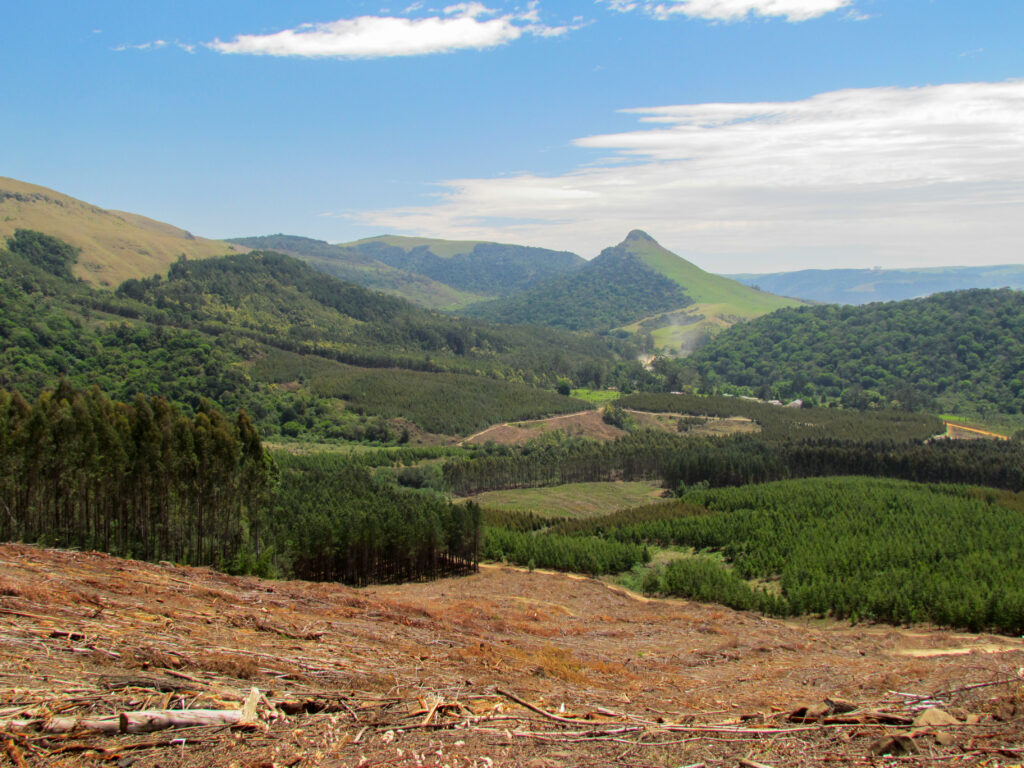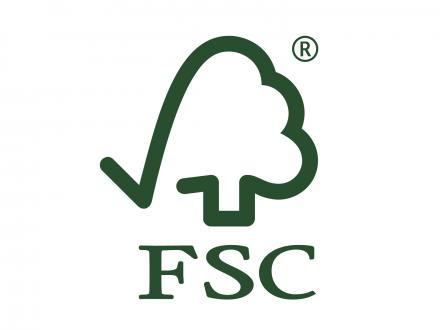In the face of climate change, it is more important than ever to ensure that the products we use are produced sustainably. When it comes to wood, that means taking care to use wooden products that come from sustainably sourced timber, but what does that mean? Using timber that has come from sustainable forestry plantations rather than a natural forest is an obvious start, but sustainability doesn’t end there.

Commercial plantations can also cause environmental damage, if they aren’t placed, managed, or harvested correctly. To make sure this doesn’t happen, the South African government has created a series of legal requirements that lumber companies must fulfill in order to be able to plant and harvest timber. These requirements come from a total of eight different acts, such as the National Forests Act and National Water Act.
These acts cover various aspects of the lumber industry such as responsible water use and the eradication/management of alien invasive plant species. However, these regulations do not go far enough to be considered truly environmentally sustainable. Forestry South Africa, a group which represents 93% of South Africa’s plantations, believes that complying with the law is a minimum for the industry. As it is, there are many examples where there is a disregard for the legal requirements of plantation establishment and management.
A more thorough and comprehensive standard is the one granted by the Forestry Stewardship Council, or FSC. Their standards aim to ensure a product, and an industry, that operates in a truly sustainable way, not just in terms of the environment, but in regard to the rights of workers and communities. The process of getting FSC certification involves being assessed to verify compliance, as well as regular checks after the certification has been issued, to make sure that compliance is maintained. Certification does not just end with the producer; however, Chain-of-Custody assessments are used to ensure that every business from production, transportation, processing and point of sale is FSC compliant.

It must be pointed out, however, that this certification system was devised largely for foresters around the world who harvest indigenous forests. In the South African context, our timber comes from plantations, and FSC certification focuses on management of existing plantations, without particular emphasis on what impact there might be in replacing grasslands with plantations in the first place.
A 2015 paper by New Generation Plantations, entitled “Plantations in grasslands” reports that: “There’s a danger, though, that a focus on forests leads us to overlook the importance of other biomes – such as grasslands.”
An Indian study, published in 2018, states that “Grasslands have gone from being the dominant, most contiguous land cover to one of the rarest and most fragmented. They have been replaced by timber plantations and, to a lesser extent, expanding agriculture. We find that the spatial pattern of grassland loss to plantations differs from the loss to agriculture, likely driven by the invasion of plantation species into grasslands.” Their comments ring true for parts of South Africa.
In recognition of this, timber farmers in South Africa now require a water use license for any new areas of timber to be planted. These licences are issued with care, and with regard to locally applicable environmental concerns.
The remaining gaps to manage plantation forestry for the purposes of maintaining and safe-guarding our indigenous environments, revolve around the spread of alien species, and ensuring that the plantations we already have, are managed as sustainably as possible. Laws passed to achieve this are often not complied with. Consumers can however drive the behaviour of timber producers. A consumer can contribute to this process by altering buying habits to exclude goods that are not FSC compliant.
According to Mongabay (a non-profit conservation and science news website), only 15.10% of South Africa’s 9 million hectares of timber was FSC certified as of 2017.
Every FSC compliant product is labelled with their logo. This way, any consumer can see if a business has gone above and beyond to act sustainably, and the global integrity of the FSC means that consumers can trust that they are buying sustainable products. It also goes some way to show which companies are not going out of their way to protect the environment.
The FSC standards are vast and thorough, if you would like to take a closer look at them, you can find them here.
Forestry South Africa publishes a report on environmental guidelines for forestry, which you can find here.
